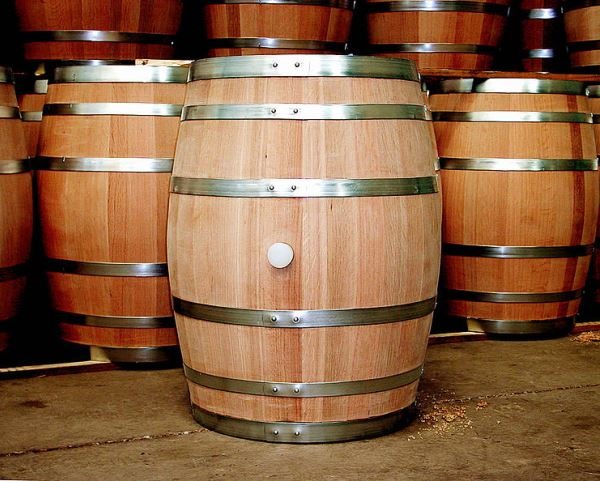The Value Wine You Need
Cabernet sauvignon is Chile's most cultivated grape, with more than 98,000 acres of vines planted. While the character of Chilean cabernet varies, it often has fresh black fruit and good acidity. Although alcohol levels can be in the 13 to 14 percent range, these wines manage to avoid an overly jammy flavor profile sometimes found in wines from hotter climes. Chilean cabs are generally not powerful, high tannin wines that need years of aging before being "ready" — they are approachable young, and they're as easy on the pocketbook as they are on the palate.
Cabernet's History in Chile
For a "new world" wine region, Chile has a surprisingly long winemaking history. Spanish missionaries planted vineyards here in the 1550s, but it wasn't until the 1850s that wealthy landowners took any interest in growing Bordeaux varieties — including cabernet sauvignon.
But over the past 20 years, vine planting and exports expanded in Chile significantly. Today, cabernet sauvignon production is at the forefront of Chile's wine industry. And the future is likely to hold more finely-tuned plot selection, guided by consultants such as Chile's own "Terroir Hunter," Dr, Pedro Parra.
The Lay of the (Long) Land
Cabernet sauvignon is grown in a number of regions in Chile, but to understand where this late-ripening grape thrives, it's important to consider the country's unique topography. Chile is more than 4,500 kilometers long and only 150 kilometers wide. In the west, the sea brings cold breezes to the coast, and to the east the towering Andes dominate the landscape. In the center are a number of river valleys. Recognizing the importance of these physical features, the Chilean wine industry recently split the country into three vertical areas to simplify things: the Costa (coast), Entre Cordilleras (central), and Andes (eastern).
Climate and Soil
Chile's wine regions climate is characterized as Mediterranean, with warm, dry summers and cold, rainy winters. Winds from the Pacific provide vines with natural protection against mildew and pests. The valley floors can get hot, but the cooler, elevated areas in the foothills of the Andes and along the westerly coastal range bring more acidity and freshness to cabernets. Chile's soil types include clay, silt, loam, and granite.
Cabernet Country
Cabernet sauvignon is grown primarily in the Entre Cordilleras valleys and on the foothills of the Andes. Within those large areas are a number of defined regions.
Maipo Valley
Maipo Valley, the closest region to the capital Santiago, has 15 acres of cabernet sauvignon vines. The Alto Maipo is considered one of Chile's best sources for premium cabernets, including Santa Rita's Casa Real and Concha y Toro's Don Melchor. Located in the Andes foothills (alto means "high"), the vineyards sit at elevations ranging from 1,300 to 2,600 feet. The afternoon sun warms the vines and the night breezes from the Andes cools them. This wide range of day to night temperatures produces ripe but elegant cabernets with good acidity. The Central Maipo has well-draining alluvial soil along the Maipo River and produces balanced, fruity cabs.
Colchagua Valley
Located in the southern Rapel region, Colchagua is one of Chile's best-known wine regions, and it produces affordable as well as high-quality cabernet sauvignon. There are 28 acres of the grape planted in this warm land, which lies close to the western coastal mountain range and enjoys breezes from the Pacific. Some of Chile's top wineries source grapes from the famous Apalta terroir, known for its stony soil and low yields. There, cabernet may be featured in a blend, such as in the celebrated Lapostolle Clos Apalta.
Cachapoal Valley
There are eight acres of cabernet planted across Cachapoal, a predominately red wine region. This valley is a subregion of the northern Rapel Valley, which is a center of Chilean agriculture. Look for higher quality cabs from the Cachapoal Alto, which stretches eastward into the Andean foothills.
Aconcagua Valley
The mighty Aconcagua Mountain, more than 20,000 feet high, towers over this northern valley, which has hot days to ripen cabernet grapes and cool nights to keep them fresh. The region has more than 700 acres of cabernet sauvignon planted on clay and sand to the east and granite and clay to the west.
Maule Valley
Thirty-five acres of cabernet sauvignon are planted in this historic wine region, where old-bush, dry-farmed vineyards are still found, and many winemakers use organic winemaking techniques.
Limari Valley
This semi-arid region includes more than 600 acres of cabernet planted in clay, silt, and chalk. The lack of rainfall causes vines to develop deep roots to search for water in the mineral-rich soil.
Curicó Valley
About eight acres of cabernet sauvignon thrive in the warm Mediterranean climate of Curicó, a region that got its winemaking start when the major Spanish winery Torres invested here in 1979.
Click here for tasting notes on Chilean cabernet sauvignon.
Diane Letulle, Snooth
